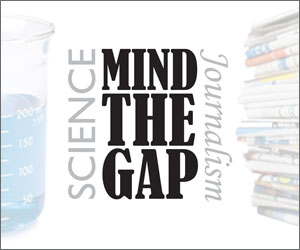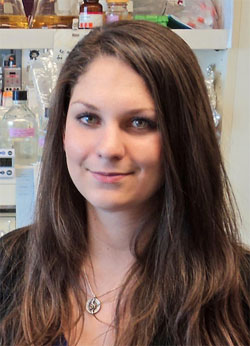Sexual Identity and Autocrine Stimulation: Oh, To Be Teenage Yeast
by
 I picked today’s topic based on personal interest. As an overzealous undergraduate I came to Brown to work on a very similar problem, and so I was excited (yes, I still get excited despite staring down the barrel of my seventh year in graduate school) to see this article title in Current Biology:
I picked today’s topic based on personal interest. As an overzealous undergraduate I came to Brown to work on a very similar problem, and so I was excited (yes, I still get excited despite staring down the barrel of my seventh year in graduate school) to see this article title in Current Biology:
“Asymmetry in Sexual Pheromones Is Not Required for Ascomycete Mating”
Fascinating right? Hmm…
So now I find myself in the rather sticky predicament of having to make fungal reproduction exciting. One thing’s for sure, you’re probably going to learn something from this. Whether it’s useful information or not is dubious, but luckily the nomenclature is brimming with innuendo.
First off, let me introduce the ascomycetes. They represent the largest phylum of fungi (more than 64,000 species) and are commonly referred to as the sac fungi (teehee…sac…). Truffles, Penicillium species, and Dead Man’s Fingers all belong to this phylum, but more importantly for today’s topic, so does Saccharomyces cerevisiae. This yeast is crucial to bread and alcohol production, two things close to my heart, and has become a widely used model system for the study of a wide array of biological processes.

All this for me? You're one romantic haploid...
And that includes the study of sexual identity. Yes, despite being single celled organisms, yeasty beasties get down and do the naughty every once in a while.
Sexual reproduction in yeast is a highly orchestrated process. It usually begins with a nice dinner and a movie, followed by a glass of cognac and some Al Green. Actually, growing S. cerevisiae exist in three distinct cell types that are defined predominantly by their genetic content. Haploid cells, that contain only one copy of the yeast genome, can exist as either a or α “mating-types”. These haploids can mate with each other and form diploid cells, which are then able to sporulate.
In order for two haploids to mate they have to entice one another with pheromones. If one haploid fancies another, it elongates, or “schmoos” towards its chosen partner. When the schmoos meet cell fusion can take place and a diploid cell is created. For wild S. cerevisiae, this courtship only results in mating if the two cells are of different mating types. This is because a and α cells produce different pheromones and pheromone receptors, and can therefore only recognize cells of the opposite sexual identity.
But what if they could recognize the same pheromone? Would they then be able to mate with cells of the same mating type? And would they be able to engage in autocrine stimulation (i.e. tickle their own pheromone receptors)?
One of the nice things about yeast species is that scientists are able to genetically manipulate them and get them to do all sorts of things they wouldn’t normally do. So that’s what the authors did. They engineered S. cerevisiae haploids so that they expressed different pheromone and pheromone-receptor genes.
It turns out that these engineered haploids could happily mate with one another regardless of the pheromone/receptor pairs they contained, so long as they were complimentary. So why did this requirement for having complementary sexual identities evolve in certain yeast species if one would do?
To allow for selection and outbreeding, and thus the maintenance of species fitness, naturally. Indeed, when a cells are given a choice, they prefer to mate with the α cell that oozes more pheromone than one that is less virile. If an α cell has lost its mojo (either through the evil plotting of Fat Bastard or, more likely, due to some environmental issue) it will be out competed in the wild.
As for autocrine stimulation, it likely results in a lack of discrimination in potential mates. There’s a lesson there somewhere…
.
Katie Pratt is a graduate student in Molecular Biology at Brown University. She has a passion for science communication, and in an attempt to bring hardcore biology and medicine to everyone, she blogs jargon-free at www.katiephd.com. Follow her escapades in the lab and online on Twitter.
.
.
Be the first one to mind the gap by filling in the blank as a comment and get your name in the blog along with a sweet new BenchFly mug!
.
UPDATE: Congratulations to Jessica Martin – winner of this week’s Mind the Gap!
 About the winner: Jessica is a graduate student in biochemistry at Oregon Health and Science University. She has a newly discovered passion for parasitology and infectious diseases. She can be found on google plus at http://gplus.to/jessmartin.
About the winner: Jessica is a graduate student in biochemistry at Oregon Health and Science University. She has a newly discovered passion for parasitology and infectious diseases. She can be found on google plus at http://gplus.to/jessmartin.
About the prize: In addition to fame and glory beyond their wildest dreams, winners receive our new hot-off-the-presses large (15 oz) BenchFly mug to help quench their unending thirst for scientific knowledge… or coffee.
.

.
Miss a previous edition of Mind the Gap? We’ve got you covered:
On Wine, Sunburns and the Tendency of Headlines to Mislead
Which Came First: The Opossum or the Snake?
Pigeons Know a Crazy Woman When they See One
To Boldly Go Where No Worm Has Gone Before
Another One Bites the Dust: Rinderpest Eradicated
Scientists Just Wanna Have Fun (Like Uncaged Monkeys)
Mosquitoes Eating You Alive? Cheesy Feet Could be the Problem
Dirty Mouth? Clean it Up with Cancer Screening
Because in Space…It’s Always 5 O’Clock Somewhere
Curry: Now Good for Detecting Explosions, Not Just Causing Them
So You Thought Eating Poop Was Bad For You?
Are Fatty Acids the Cure for PMS?
Botanical Sleuthing Recovered Endangered Daisy
.
.
.


Jessica
wrote on August 17, 2011 at 2:21 pm
shmoo
alan@benchfly
wrote on August 17, 2011 at 2:29 pm
We've got a winner! Congrats!